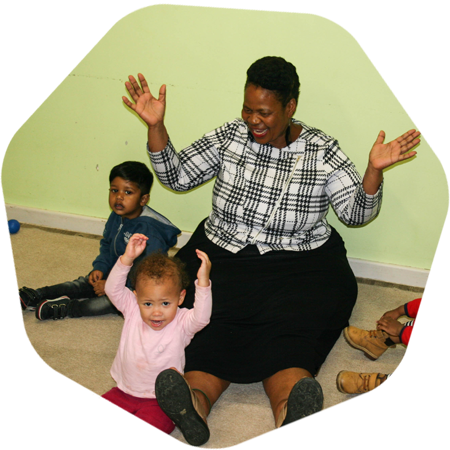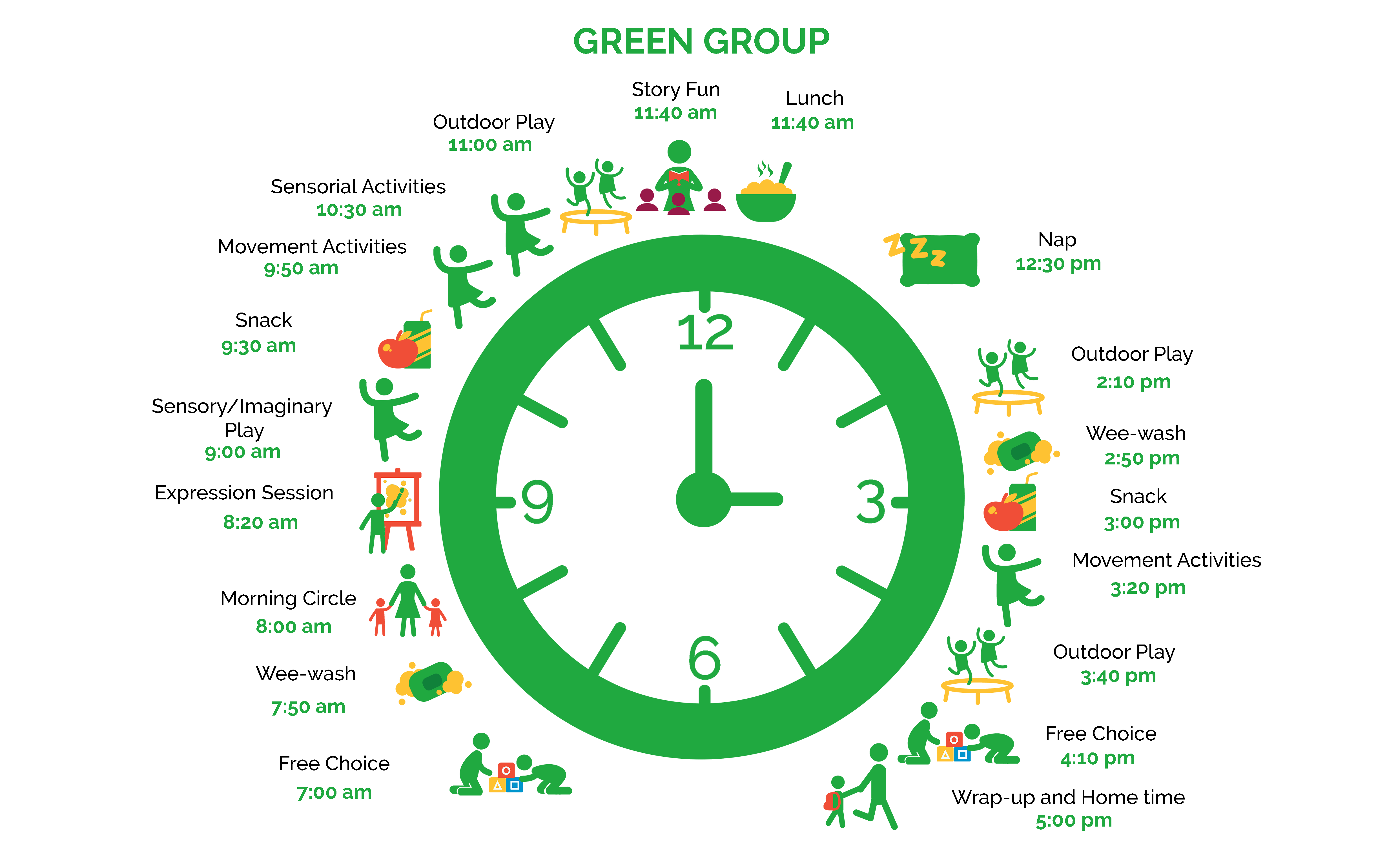
Green Group: Turning Two
Toddlers in green group are moving out of their “parallel play” phase, becoming more social and confident as they learn to communicate and cooperate in a group environment. Our green group teachers love seeing each child in their classes developing a positive sense of self!
Enrol my child now
Green Group Daily Routine:

Development and Learning Objectives for the Green Group:
Language, Literacy and Creative Expression
Maths and Scientific Reasoning
Physical, Social and Emotional well-being
 Language, literacy and creative expression
Language, literacy and creative expression
Engages in music, art and dramatic play
1c. Sings along and copies actions during morning circle ; uses found objects and musical instruments to make rhythmic/melodic sounds.
1d. Use art materials for various forms of intentional mark-making on appropriate surfaces.
Receptive & Expressive vocabulary development
2f. Learns at least 1 new word per week
2f. Says the new word while pointing to the item and/or gesturing to indicate the action it relates to.
Coherent expression of personal ideas, thoughts, feelings
3d. Attempts at communication through speech are understandable at times
3e. Strings 3-5 words together to form phrases that make sense and are relevant.
Response to text
4b. Points to specific items within illustrations and parrots memorable lines from the story text.
Phonological Awareness
5b. Pronounces onset (beginning) sounds of words (e.g. “ba” as points to ball
5c. Chants rhymes emphasices rhyming words and/or pronounces tongue twisters or sentences with alliteration correctly.
Print awareness / concepts
7a. Discriminates between text and illustrations (by pointing to one or the other as prompted)
Tracing, transcription and writing
8a. Starts to make writing-related marks (scribbles) intentionally on paper with pencils or crayons.
 Maths and Scientific Reasoning
Maths and Scientific Reasoning
Verbal and object counting
10a. Counts in a ‘sing-song’ fashion up to 5 (imitates teacher counting objects)
Relative Magnitude and Measurement
12b. Indicates the relative size of two objects (bigger, smaller)
Shape recognition and manipulation
13b. Identifies triangles, squares, circles, rectangles, and ovals
Classification and Repeat Patterning
15a. Classifies and sorts items into categories suggested by the teacher (e.g. put all the blue objects in one pile and all the red objects in another pile).
Planning and Cognitive Flexibility
16a. Responds to questions about intended actions
Hypothesis formation
17b. Asks questions about observed objects and happenings (phenomena)
 pHysical and social emotional wellbeing
pHysical and social emotional wellbeing
Self-regulation
18d. Seeks help from adults (using gestures or simple words) to fulfil physical needs
18e. Seeks help from trusted adults to co-regulate when feeling upset or overwhelmed.
18f. Plays cooperatively with peers during most free play periods.
Response to expectations
19c. Willingly participates in classroom routines and generally adheres to classroom behavioral norms, with occasional direct reminders from teacher.
Positive sense of self
20b. Expresses personal preferences (what do you like?)
Persistence in the face of challenges
21b. Begins to show an understanding of the need to share and is willing to wait their turn when prompted.
Gross motor coordination
22l. Walks along a straight line (taped on the ground), putting one foot in front of the other, for at least 2 metres.
22m. Walks up stairs safely and/or climbs up a small jungle-gym ladder (3-5 rungs) with confidence.
22n “Jumps/hops over a straight line (taped on the ground) with two feet
“
22o. “Throws a bean bag/ball towards an intended target.
“
22p. “Runs forward with control and stability.
”
Fine motor coordination
23j Finger thumb opposition (Touches thumb to all other fingers one at a time)
23k “Joins and separates lego blocks.
“
23l “Pours water from a jug into a designated container without spilling
“
23m “Screws and unscrews the lid of a jar or the nut on a bolt.
“
23n Swivels shapes to fit into pre-defined holes.
23o “Threads string through relatively large punch holes
“
23p “Holds crayons to make marks on paper effectively.
“